If your home is heated and cooled with air, take a few minutes to inspect the ductwork that distributes it throughout your home. You can typically find it in the basement, attic, or in a utility closet on the main level. Turn on the furnace or air conditioner to activate the blower, and look for a hole, gap, or loose joint in nearby supply ducts. Hold your hand over trouble spot and feel for air leakage. To find very small cracks, take a candle with you. Blow it out and watch what happens to the smoke when you bring it near a duct leak.
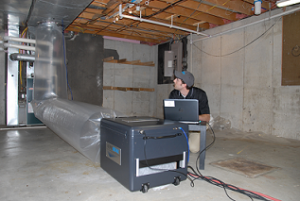
The Aeroseal duct sealing process seals up to 90 percent of leaks from the inside using a safe adhesive.
According to the EPA’s Energy Star program, leaks can add up to a 20 percent energy loss. That directly translates into energy bills that are a lot higher than need be.
Sealing ducts after they have been installed is a hit-or-miss proposition. While it’s possible to seal gaps and holes with reinforced tapes and mastic as the sections are being connected or where ducts are accessible, it’s not nearly as easy once they’re installed. Ducts may be inside walls, floors, or ceilings; crammed into attic eaves; strapped to framing; and wrapped with or buried under layers of insulation.
The Aeroseal duct sealing system, developed by the Lawrence Berkeley National Laboratory, can seal ducts from the inside. Holes and cracks up to 5/8-in. wide can be sealed, and air leakage may be reduced by up to 90 percent, claims Aeroseal.
David Byrnes, a Phoenix, Arizona energy auditor, acknowledges the benefits of Aeroseal in his blog “Does Aeroseal Work? An Auditors Review” for Home Energy Pros, but he feels there are some negatives, too. He points out that the treatment does not seal the largest, most important leaks.
“Since crews assume all the duct leakage was found and sealed, if they go into the attic, they will not look for large leaks in the ductwork,” says Byrnes.
Daryl Senica, an Aeroseal contractor, responds: “When we do a job our techs first check all existing ductwork to see if there are any large holes, breaks or if the duct work is damaged. Then they repair, replace (at additional cost to home owner) and mastic any leaks.”
Byrnes also point out that Aeroseal is an expensive service that should only be used when hand sealing is difficult or impossible.
How it works
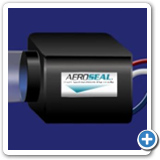
Holes up to 5/8 in. can be sealed with this innovative system.
First, your ductwork is tested to measure the current leakage and to determine whether it is a candidate for sealing. Registers are sealed off. Then a blower is used to pressurize the ducts as tiny adhesive particles are sprayed into the stream of air.
The particles remain suspended until they are drawn to a leak. As they try to escape, they stick to the edges of cracks and holes. Gradually, enough particles build up to seal the leak. Finally, a second test is done to measure the effectiveness of the sealing treatment.
The sealant used in the Aeroseal system is vinyl acetate-acrylate polymer emulsified in water. It has been used in water-based paints, adhesives, and hair spray. Vinyl acetate polymer has been used as a base in chewing gum. Aeroseal is UL-Listed for smoke generation and flame spread. UL tests also show that the sealant does not support mold growth and that it doesn’t erode. In addition, the sealant is odorless, won’t develop cracks, and carries a 10-year warranty.


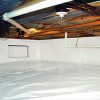
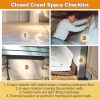
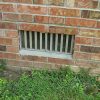

where do I find some one to seal up ducts in western NC zip 28732? as mentioned in the article??
I suggest contacting a Dr. Energy Saver dealer located in Charlotte (877) 457-7212. They may be able to do the duct-sealing work or recommend someone who can. Good luck.
I have seen this on an episode of this old house and think it is great .I have told a few people about since I do hvac work. it The first thing that ask is;what is it made from, followed by is it toxic? Where can I find the service to seal off duct systems in Milwaukee Wi?
It’s non toxic the same active ingredient as Elmer’s glue. Basically it’s watered down glue that’s rapidly dried out so it becomes like white little sticky particles that accumulate n stick to exit points of the ducks work, which cause it to tighten. Company just perched one to easier satisy the energy star version 3 program.
is there anyone near me in Vandalia, Ill 62471, my AC duct work in my basement is dripping condensation. i have three dehumidify running